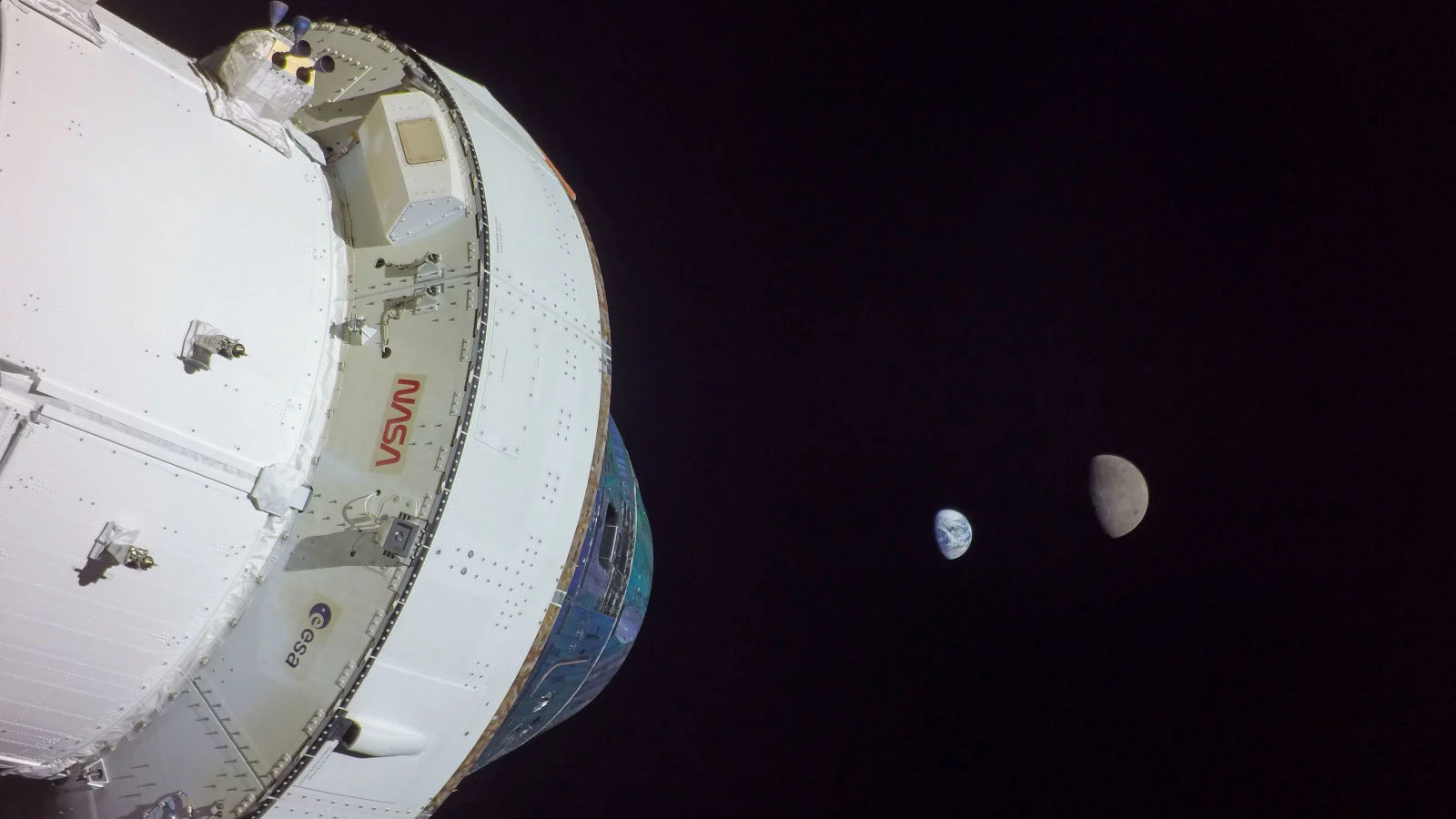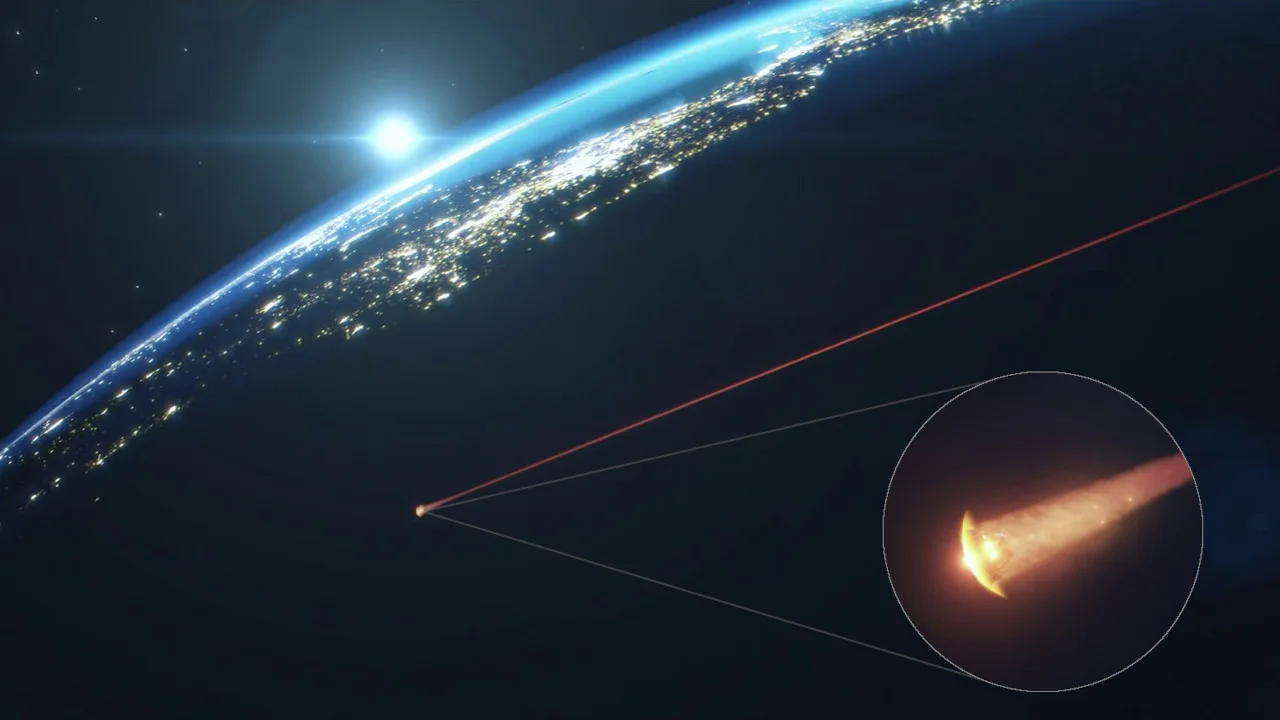
NASA to skip Orion 'like a rock' across the atmosphere before Sunday splashdown
After nearly a month in deep space, the Orion spacecraft is nearly home again, and it will perform a unique 'skip' maneuver on its way in.
Like a stone across the surface of a pond, NASA's Orion spacecraft will skip across the top of the atmosphere on Sunday. This never-before-attempted maneuver will keep future Artemis astronauts safe during their return to Earth.
The Artemis 1 mission has already set a new record for the farthest distance flown by a human-rated spacecraft, beating the previous record set 52 years ago by Apollo 13.

NASA's Orion spacecraft snapped this 'selfie' with the Moon and Earth, at its maximum distance from Earth (432,210 km) on November 28, 2022. This beats Apollo 13's record of 400,171 km, set on April 14, 1970, as the spacecraft flew around the Moon's far side. Credit: NASA
As Orion approaches home for its Sunday splashdown in the Pacific Ocean, NASA is preparing it to perform a maneuver designed in the Apollo era but never attempted before by a crew-rated spacecraft — a skip entry.
During this maneuver, the Orion capsule will enter Earth's atmosphere at a shallow angle. As it compresses the air in its path, the capsule will produce a plasma fireball around it, similar to a meteor. At the same time, the pushback by the atmosphere will slow the spacecraft down. This process is called aerobraking, and it has been used by countless missions so far, both here and on other worlds, such as Mars and Titan. However, it will be different for Orion.

This artist's rendition shows the Orion capsule during reentry into Earth's atmosphere. The inset frame reveals the plasma fireball surrounding the capsule during the maneuver. Credit: NASA
Usually, a spacecraft only uses an aerobraking maneuver once on its way toward splashdown or landing. Instead, the Orion capsule is going to perform it twice.
Since the capsule will be travelling at over 40,000 kilometres per hour when it first enters the atmosphere, it will make an initial dip in to slow itself down. The forces pushing back on Orion by the atmosphere will then lift the capsule back into space (the 'skip'), where it will bleed off some of the heat generated by that maneuver. Then, the spacecraft will come back in with a much slower speed to make a gentle splashdown off the west coast of the United States.
Watch Below: The First-Ever Skip Entry for a Spacecraft Built for Humans
According to NASA, this skip entry maneuver provides a safer reentry for crew flying in the spacecraft and allows for a more precise splashdown.
"During Apollo, the spacecraft entered the Earth's atmosphere directly and could then travel up to 1,725 miles (1,500 nautical miles) beyond that location before splashing down. This limited range required U.S. Navy ships to be stationed in multiple, remote ocean locations," the agency said on its website. "By using a skip entry, Orion can fly up to 5,524 miles (4,800 nautical miles) beyond the point of entry, allowing the spacecraft to touch down with more precision. The skip entry ultimately enables the spacecraft to accurately and consistently land at the same landing site regardless of when and where it comes back from the Moon."
The splashdown of the Orion capsule is expected at 12:40 p.m. EST on Sunday, December 11. NASA's live coverage of the event is scheduled to start at 11 a.m. that morning.
In the meantime, you can watch the live feed directly from the Orion spacecraft's cameras on the NASA website.











